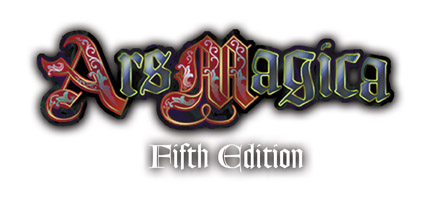Languages of Mythic Europe: Difference between revisions
Jump to navigation
Jump to search
No edit summary |
|||
| Line 66: | Line 66: | ||
|- | |- | ||
|Southern English | |Southern English | ||
|Wessex, Sussex, Anglia, Kent | |Wessex, Sussex, Anglia, Kent, Middle English | ||
|- | |- | ||
|Frisian | |Frisian | ||
Revision as of 06:17, 8 January 2012
| Ars Magica Primer | |
|---|---|
 | |
| Game Setting | |
| Mythic Europe | |
| The Order of Hermes | |
|
The Order of Hermes The Code of Hermes The Peripheral Code Hermetic Book Cycle |
Back to Mythic Europe
Introduction
These are the languages and rules defined for Mythic Europe for Simon Cornelius’ Ars Magica game. It is based on Guardians of the Forest and The Lion and the Lily source books.
Language Groups
The main division of languages is into Language Groups.
Language Tables
Celtic Languages
| Language Group | Sub-Groups | Languages | Dialects |
| Celtic Languages | Goidelic (Gaelic) | Irish Gaelic | Leinster, Munster, Ulster, Connaught |
| Scots Gaelic | East Highlands, West Highlands and Islands | ||
| Manx Gaelic | Manx | ||
| Brythonic | Breton | East Breton, West Breton | |
| Cornish | Cornish | ||
| Cumbrian | Cumbrian | ||
| Northern Welsh | Northern Welsh | ||
| Southern Welsh | Southern Welsh |
Germanic Languages
| Language Group | Sub-Groups | Languages | Dialects |
| Germanic | Anglo-Frisian Group | Lowland Scots | Lowland Scots |
| Northern English | Mercian, Northumbrian | ||
| Southern English | Wessex, Sussex, Anglia, Kent, Middle English | ||
| Frisian | Frisian | ||
| German Group | Low German | Flemish, Holland, Brabant , Westphalian, Emsland, Bremenasch, Holstein, Oldenburg, Mecklenburg, Brandenburg, Pommern | |
| Middle German | Thuringian, Mittelfränkisch, Hessian, Upper Saxon, Silesian German, Lusatian German | ||
| High German | Alsatian, Bavarian, Bohemian, Carinthian, Franconian, Luxemburgish, Styrian, Swabian, Swiss German, Tyrolian, Yiddish | ||
| Norse | Icelandic | Icelandic | |
| Norwegian | Southern Norwegian | ||
| Faeroese | Faeroese | ||
| Danish | Danish | ||
| Eastern Norse | Swedish, Scanian, Gotlandish |
Romance (Latinate) Languages
| Language Group | Sub-Groups | Languages | Dialects |
| Romance Languages | French Languages | Northern French (Langues d'oïl) |
Francien (Orléans, Bourbonnais, Champagne, Paris) |
| Picard (Picardy, Lorraine, Franc-Comtois) | |||
| Norman (Normandy, eastern Brittany, Maine) | |||
| Poitevin (Poitou, Saintonge, Anjou) | |||
| Bourguignon (Burgundy) | |||
| Walloon (Flanders, Brabant) | |||
| Langues d’Oc | Languedocien (Toulouse) | ||
| Provençal (Arles, Avignon, Nîmes, Provencal Maritime, Nice) | |||
| Gascon (Guyenne) | |||
| Occitan (Limousin, Auvergnat Provençal Alpine) | |||
| Iberian Languages | Catalan | Catalan (Catalonia) | |
| Portuguese | Portuguese (Portugal) | ||
| Aragonese | Aragonese (Aragon, Navarre) | ||
| Castilian | Castilian (Castile) | ||
| Italian Languages | Gallo-Italian | Piedmontese, Lombard, Emiliano-Romagnolo, Ligurian, Venetian | |
| Italo-Dalmatian | Tuscan, Sicilian, Neapolitan, Corsican | ||
| Sardinian | Sardinian | ||
| Eastern Romance | Dalmatian | Dalmatian (Dalmatia) | |
| Romanian | Romanian (Romania) |
Greco-Armemian
| Language Group | Sub-Groups | Languages | Dialects |
| Greco-Armemian | Greek | "Standard" (Constantinopolitan), Cypriot, Cretan, Cappodocian | |
| Armenian | Armenia, Cicilian | ||
Finno-Ugric Languages
| Language Group | Sub-Groups | Languages | Dialects |
| Finno-Ugric | Ugric | Hungarian | Western, Eastern, Csango |
| Finno-Lappic | Estonian | Estonian | |
| Livonian | Livonian | ||
| Finnish | Finnish, Karelian | ||
| Sammi | Western, Eastern |
Other Languages
- Albanian: Gheg dialect is spoken in the north; Tosk dialect, the south.
- Arabic: Spoken through most of the Islamic world. Local languages also exist.
- Basque: spoken in the western Pyrenees.
- Berber: spoken in Moorish Spain and Northern Africa.
- Caucasian languages: A wide variety of languages are spoken in the Caucasian mountains, with only a passing similarity to each other. They are not Indo-European languages.
- Magyar: spoken in the middle Danube basin (Hungary).
- Maltese: spoken on Malta, oddly enough.
- Persian (a.k.a. Farsi): One of the more prominent languages of the Islamic world.